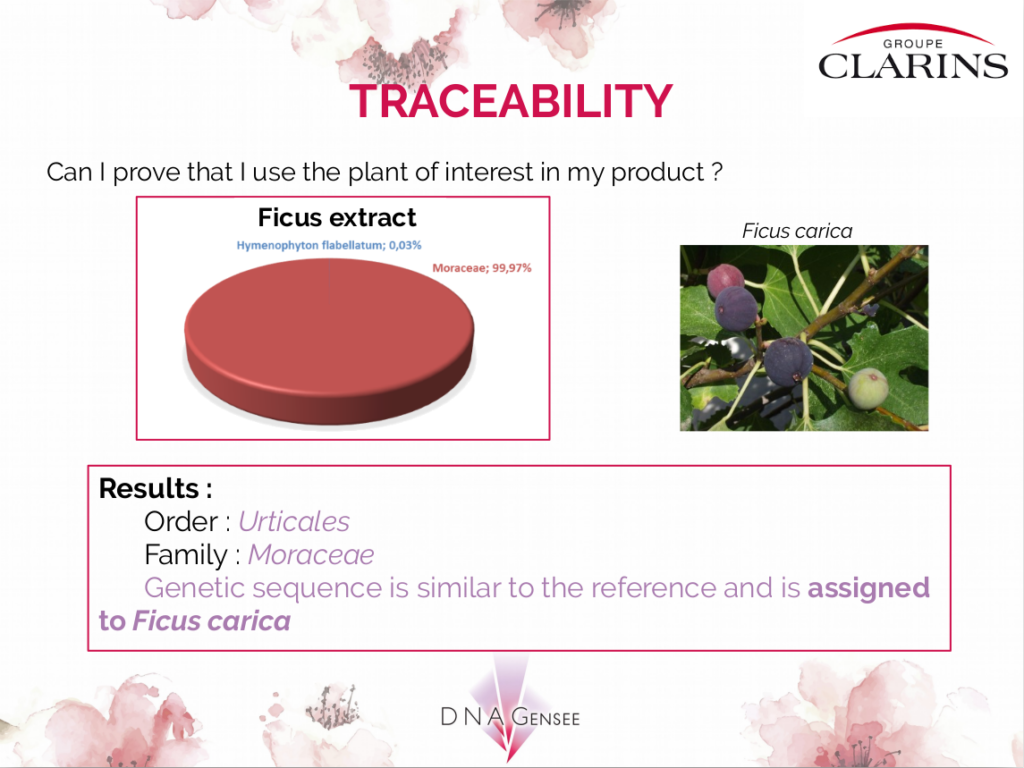Genetic traceability in plants, example of figs:
Presentation in COMET* by Dr. Philippe
*Cosmetic Measurement & Testing (February 6-7 2019 – Cergy, France, https://comet.sciencesconf.org/resource/page/id/18)
Plants are one of the most important terrestrial organisms. Many plant species are interesting for their biological properties. This diversity is widely used by the pharmaceutical and cosmetic industries. However, risks of confusion of related plant species or contaminations can occur during the supply and manufacture of finished products. Consumers are more cautious about the authenticity and traceability of the plant raw materials that compose their products. The processes used to obtain the active molecules are also important.
Technologies
Currently, many physico-chemical methods are used to control the quality of plant raw materials. The laboratory DNA Gensee has developed genetic tools to perform DNA barcoding (genetic signature search) on plants and algae. This barcoding method is very effective in providing information on botanical identification.
In addition, DNA Gensee has developed genetic tools that allow plant species to be traced throughout the manufacturing stages of a product. This method, called metabarcoding, allows one to know the plant composition of a product or a mixture of plants thanks to an innovative sequencing technology: Next Generation Sequencing (NGS).
The combination of barcoding and metabarcoding used by DNA Gensee on cosmetics, perfumes, nutraceuticals, wellness and health products is a very powerful tool to prove the genetic traceability of a plant of interest. More information on barcoding and metabarcoding HERE.
Figs
In collaboration with the Clarins group, these two techniques, barcoding and metabarcoding, were used to authenticate a sample of fig raw material (Ficus carica) and trace it in an extract (see figures). This example illustrated the genetic traceability that is a key issue for the security of raw materials and the detection of possible fraud or adulteration. In the end, this will foster a virtuous circle between the supplier of ingredients, the manufacturer and the end customer in the coming years.












